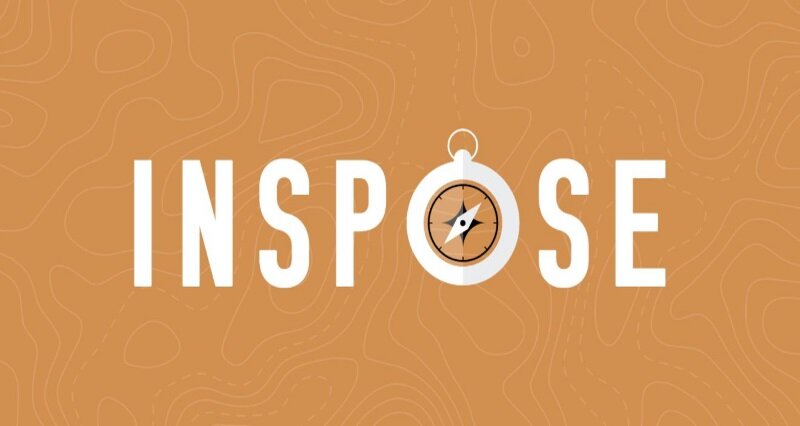
Inspose
UX/QA
Inspose
Overview
Inspose was an iOS app I helped design as part of my Capstone for my Bachelor Degree of Interactive Media Design. It was designed, developed, and presented within a 2 quarter period. The app was designed to help amateur photographers hone their craft by seeing the process of the professionals. On the app, you can navigate posts created by these professionals that represent locations they took shots at; with each post full of tips on how the author did their work as well as information on the location itself. Only registered professionals could make posts on the app but, in theory, amateurs could eventually be elected to join their ranks to add their own work to the database. Most of my focus was on the UX end of the project. Though this type of project was out of my comfort zone so to speak, and was difficult at times, it challenged me to persevere and grow skills that I feel are important to have in any team based design environment.
Contributions
Worked on brainstorming and designing app features and general user experience
Created a continually updated design document for the Inspose App
Led Competitive Analysis
Wrote the script and drew the storyboard for app’s trailer
Concepted the design for the exhibition billboard for the Capstone as well as help iterate the concept into its final design.
Wrote the descriptive text blurbs for the exhibition billboard
Lead in getting and recording user feedback for our designs through interviews and surveys
Skills Developed
Grew toward being more communicative, open, and assertive when discussing design ideas while all the while still being wide open and listening for others suggestions.
I grew to understand the importance of taking initiative when communication between team members is too low.
I learned the basic process of UX design for app development such as defining who your users are, defining the general “feel” and experience one should have when using your app, researching how your app might fair in the open market, etc
Design Process
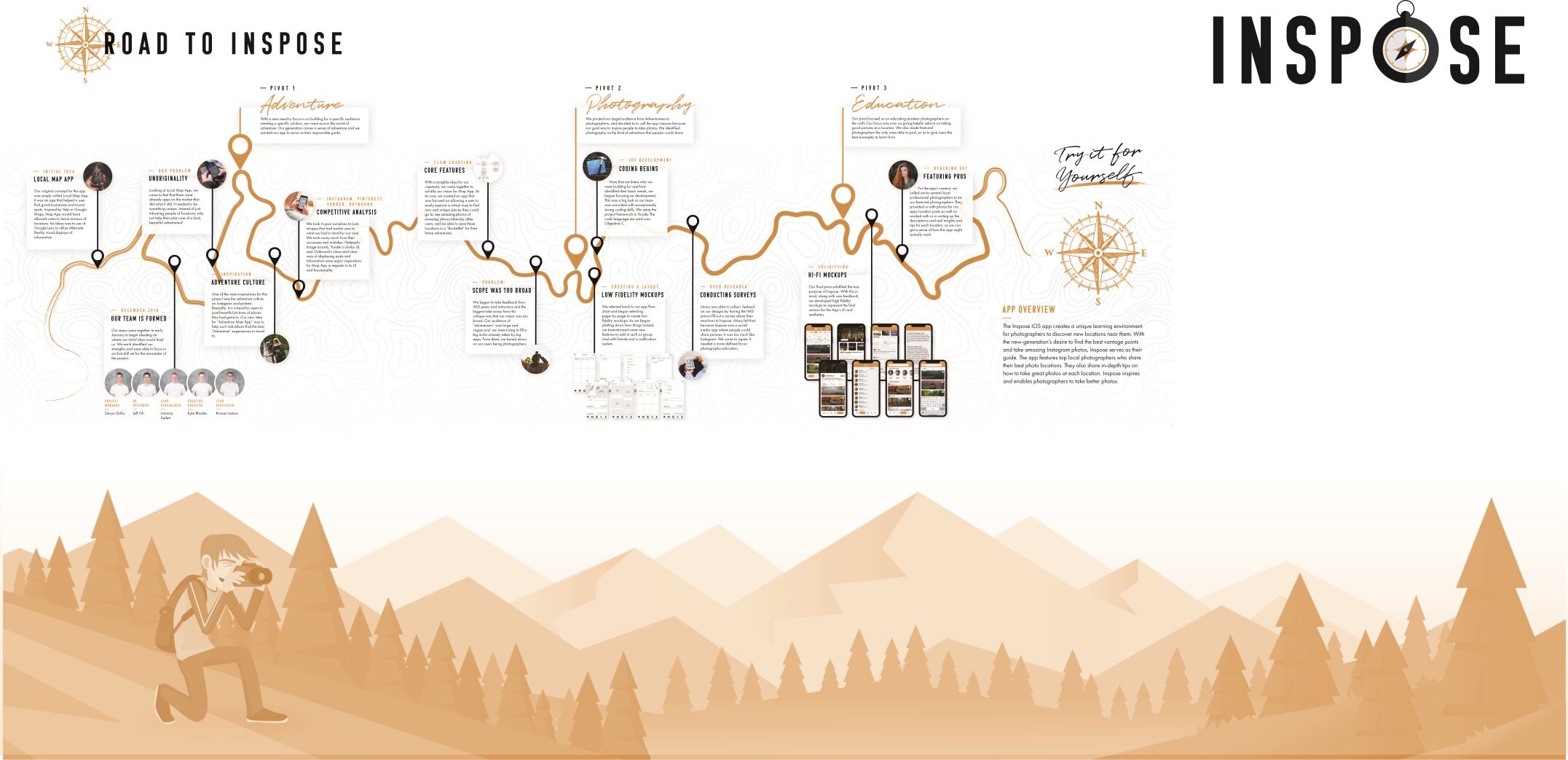
Initial Idea
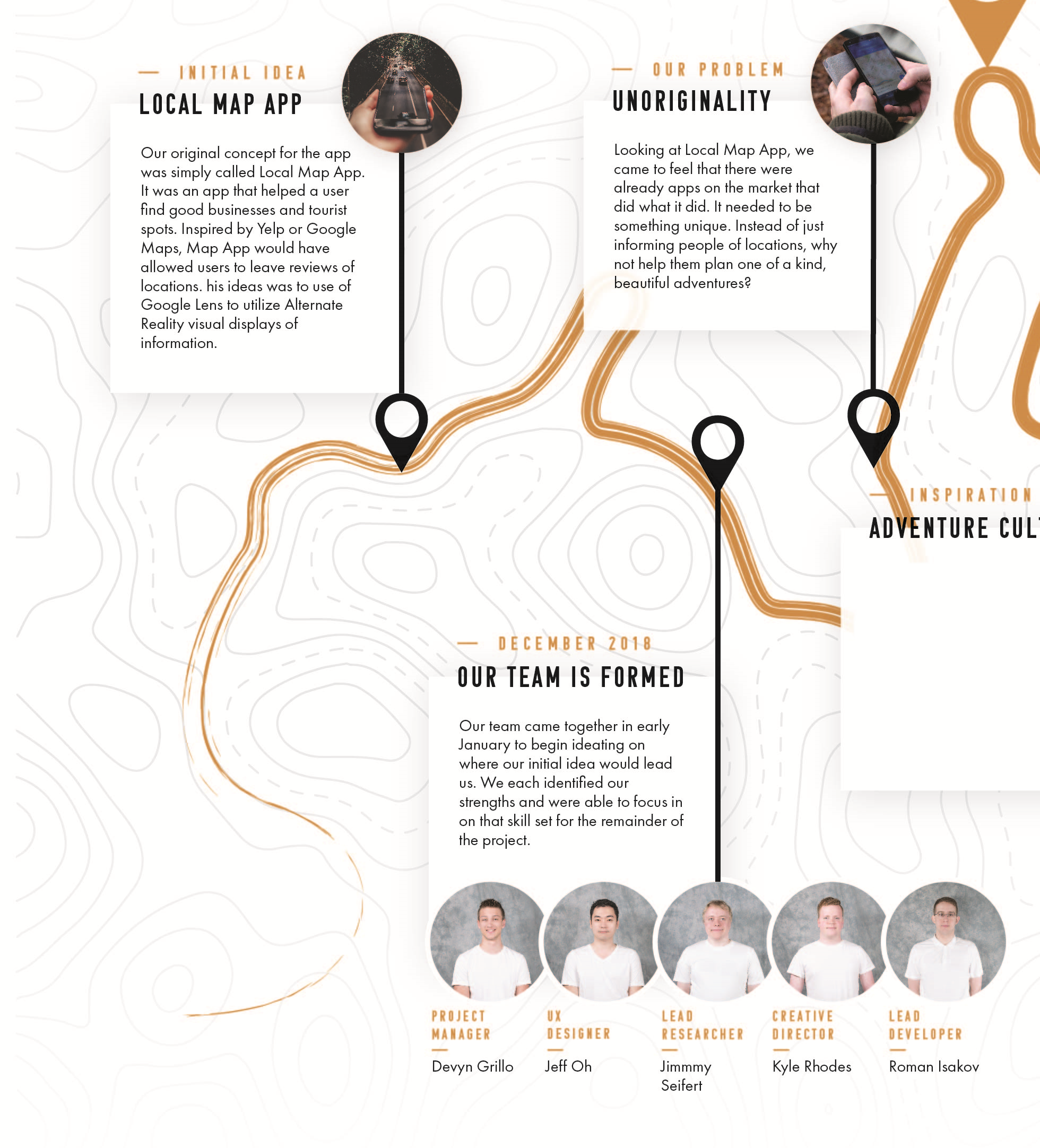
The initial idea for Inspose was heavily inspired by sites such as Yelp and Google Maps and was code-named “MapApp”. It was basically a program that would allow a user to leave reviews for locations with these reviews then being able to be seen in Alternate Reality through Google Lens. Quickly, however, we found this idea to be rather unoriginal as so many websites and applications already did most, if not all, of what “MapApp” was planned to do. From there, our first major pivot occurred.
Pivot 1: Adventure
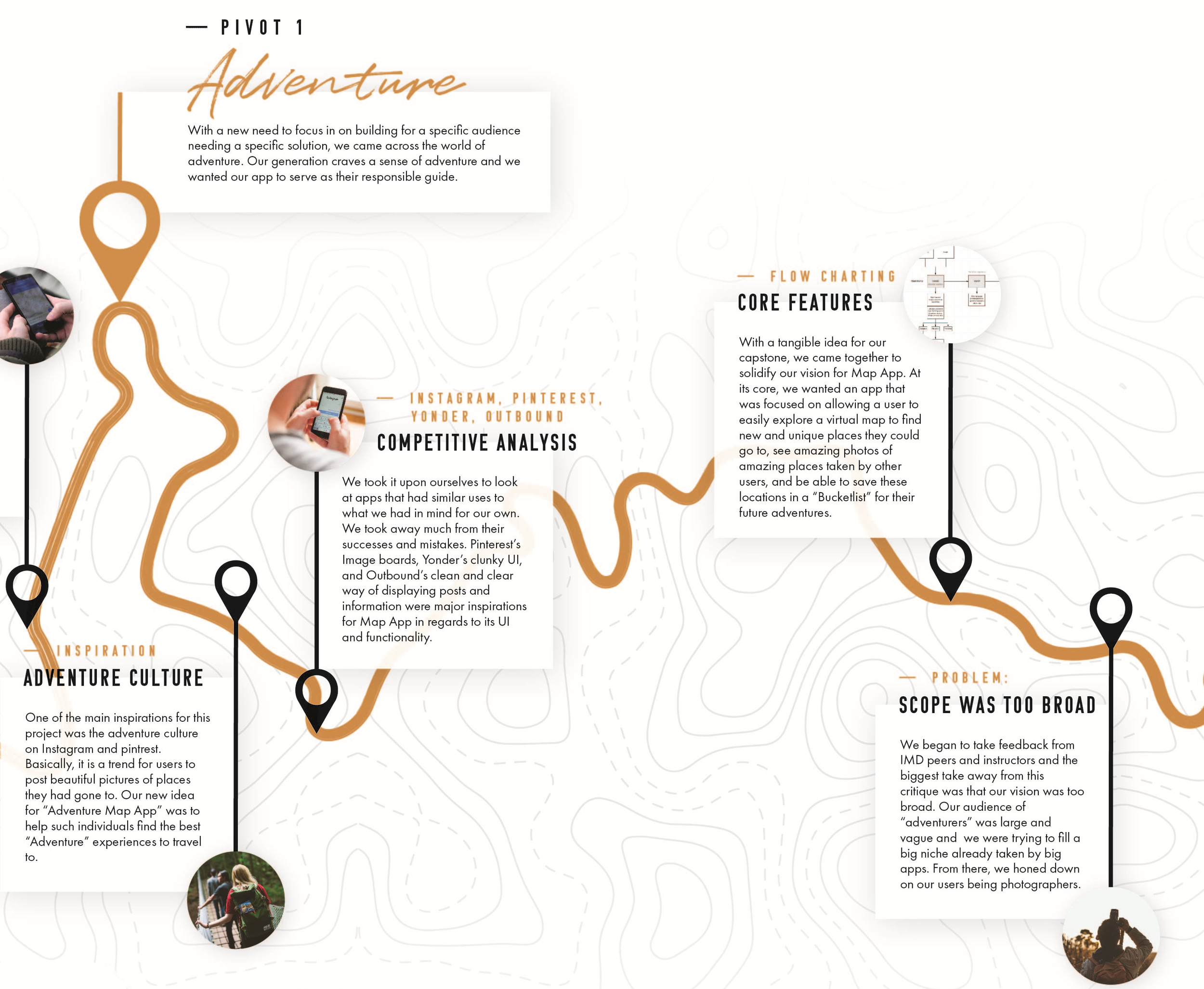
I felt it was important for us as a design group to, early on, hone down the key features for Inspose. So I organized a brainstorming session that remained a key moment for our design process. I wanted to define not only what features we wanted to have, but also what kind of experience we wanted to create for users of our app.
Kyle Rhodes, one of our team members, happened to be heavily into photography and Instagram and introduced us to the concept of Adventure Culture. Adventure Culture is basically a trend on social media for users to post beautiful pictures of places they have gone to. We were inspired by adventure culture and Instagram to pivot our project. Now, it would be a social media app dedicated to people sharing their “adventures” abroad through photos; these posts possibly inspiring others to go on their own adventures. At the time, it sounded like a unique concept; a combination of Instagram and a travel planner but more focused on the experience of traveling rather than the logistics of going on vacation.
With this type of experience in mind, one of the most important features we defined for Inspose was the digital map feature and how posts on the app worked. We wanted each picture posted to be tied to a location on a map by a user since we wanted each photo was supposed to represent an “adventure” a user had. To see these posts, we definitely wanted to have a digital map (akin to Google Maps) for users to navigate; with a pin on the map being a post. This inspiration for the map would later lead us to use the Google Maps API for this feature.
At its base, we imagined the map would display the most popular/upvoted posts and from there, filters like “location type” and “what type of activities you could there” could be applied or removed to filter out posts. On top of this, posts could also be viewed on a feed similar to Instagram as we felt from our own personal experience that users would like to navigate posts in different ways. As this brainstorming was happening, I wrote down our ideas into a design document that would be edited with each different iteration of Inspose.
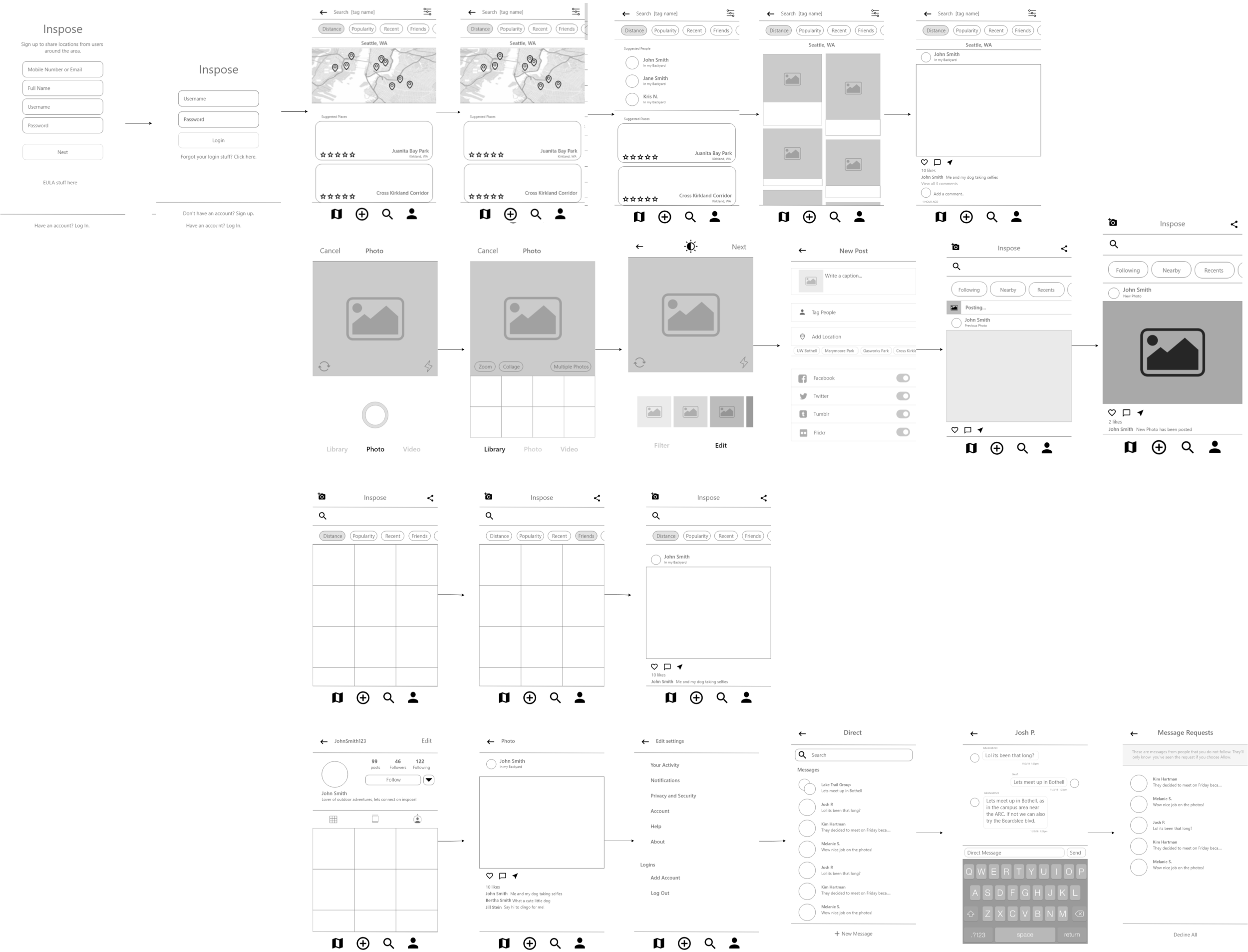
Having honed down what we wanted for Inspose, I volunteered to do a Competitive Analysis of things similar to our project. I put myself up for this task as I personally felt our photography app was being created in an environment flush with a lot of popular competitors, such as Instagram, Pinterest, or Google Maps. If we didn’t know what our competitors did right and wrong, we would be going in blind in regards to standing out amongst them. Through Instagram, I came to appreciate how simple and clean it’s UI was and how it did not distract from its content. We used Instagram as a sort of gold standard in regards to showing beautiful posts. I also discovered other mobile apps similar to our then-current idea; primarily Yonder. Yonder served an almost exact function as our idea: a space where users can post and share their travel photos. However, the UI was cluttered and clunky with information and buttons. In particular, it’s digital map was cluttered with clumps of pins close together; making it hard to navigate. Yonder’s map issues inspired the filter system we designed for Inspose.
One of the main struggles I had to face while working with my capstone group on Inspose was that many of us had a particular vision of the app. As the project grew, I personally grew toward wanting to stray away from the app’s Instagram roots as I felt we could develop something more unique. However many were attached to its main inspiration. Others had their own vision for it as well. Working on Inspose encouraged me to be more honest and assertive about my concerns and selling my ideas; all the while still being polite and empathetic to my fellow teammates as we tried to find a unified vision.
I was the most vocal about getting user feedback, partially so I could get outsider opinions on the project, thus alleviating or validating my concerns regarding our direction. I stepped up to the task. At this stage, we mainly talked to our peers within our major. The biggest point that kept coming up when discussing our work with them, however, was that our app was too broad and vague in scope. We saw Inspose as a sort of social media app that catered to and helped people who loved to travel and share that with their friends. Yet many other popular tools, like Instagram and google maps, already served that purpose. Looking at these concerns, we determined that it was time to shift the purpose of our app a little bit.
Pivot 2: Photography
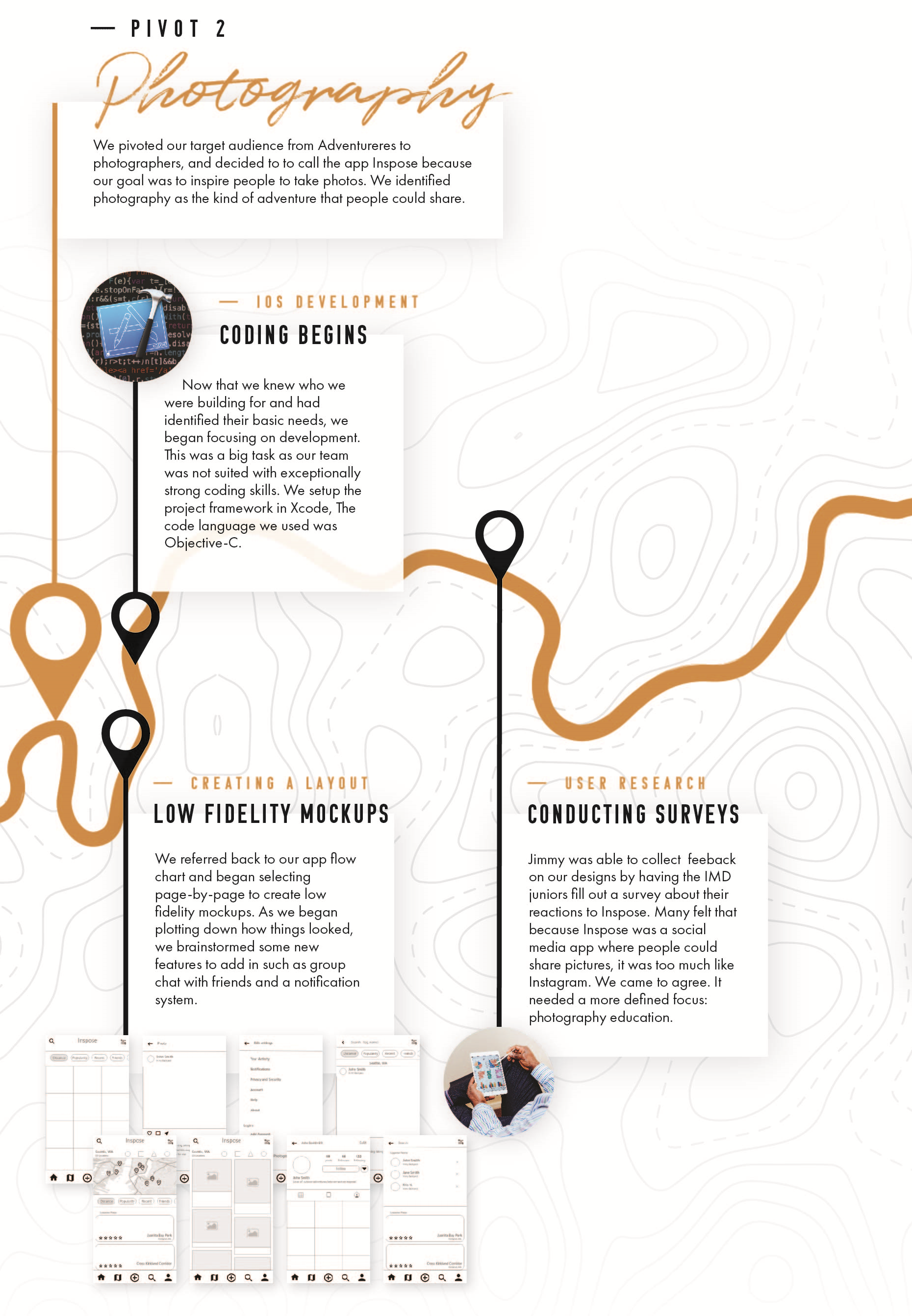
Kyle and his photography hobby inspired us again toward a new pivot: Inspose would be a social media app where photographers can share their work for others to critique. I felt personally that this pivot still had Inspose being quite too similar in purpose to Instagram, yet nonetheless now had a much more defined audience to cater to.
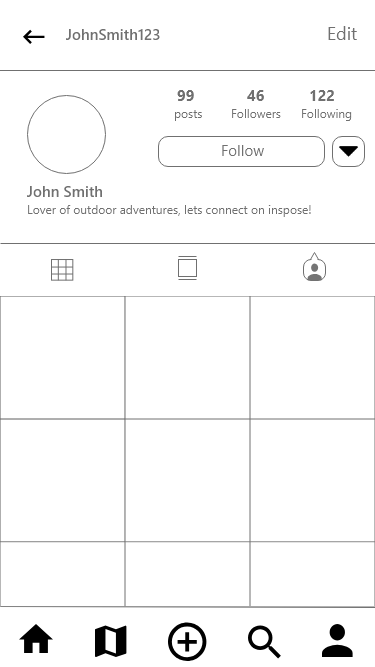
Low Fidelity Mock-Ups designed by Jeff Oh and Kyle Rhodes
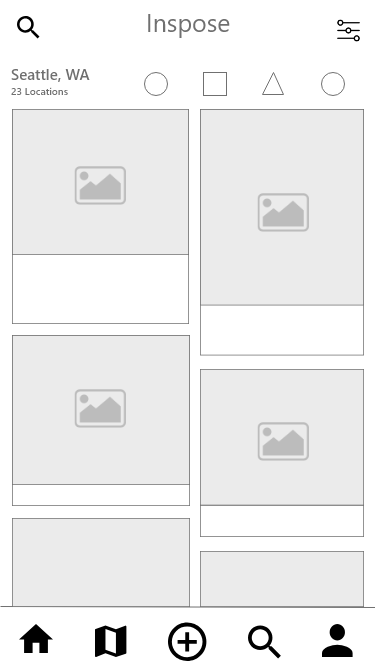

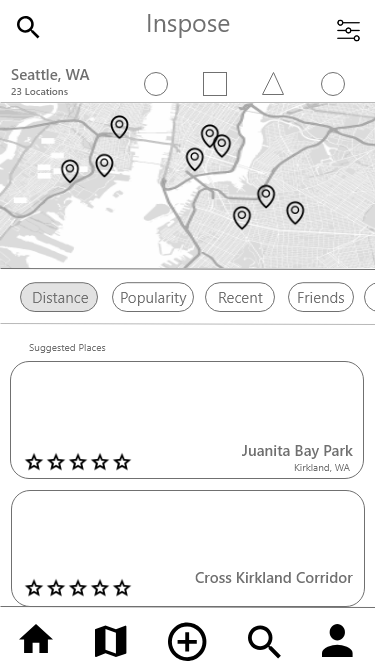
Pivot 3: Education
At this stage, Inspose got its final name and our developers began coding Inspose in Objective-C and used Xcode to create the framework for each page on the app. Low fidelity mockups began to be made and I continued to help define features through brainstorms, documenting our designs all the while.
I soon was planning data gathering sessions for user feedback. I was, however, alone in this endeavor as my team members seemed busy with their own work. It was unfortunate as I could have used their expertise in showcasing the full breadth of our designs. Looking back, I feel we as a group could have benefited from better planning in regard to such matters. We seemed to have gotten carried away with our individual work. I showcased our work to classes oriented toward photography and continued to show designs to our peers. The data we got back motivated us to consider another pivot. I was not along in my concerns that Inspose was still too much like Instagram as much of the feedback we got said how it served a very similar purpose to the app. It was here we pivoted one last time.
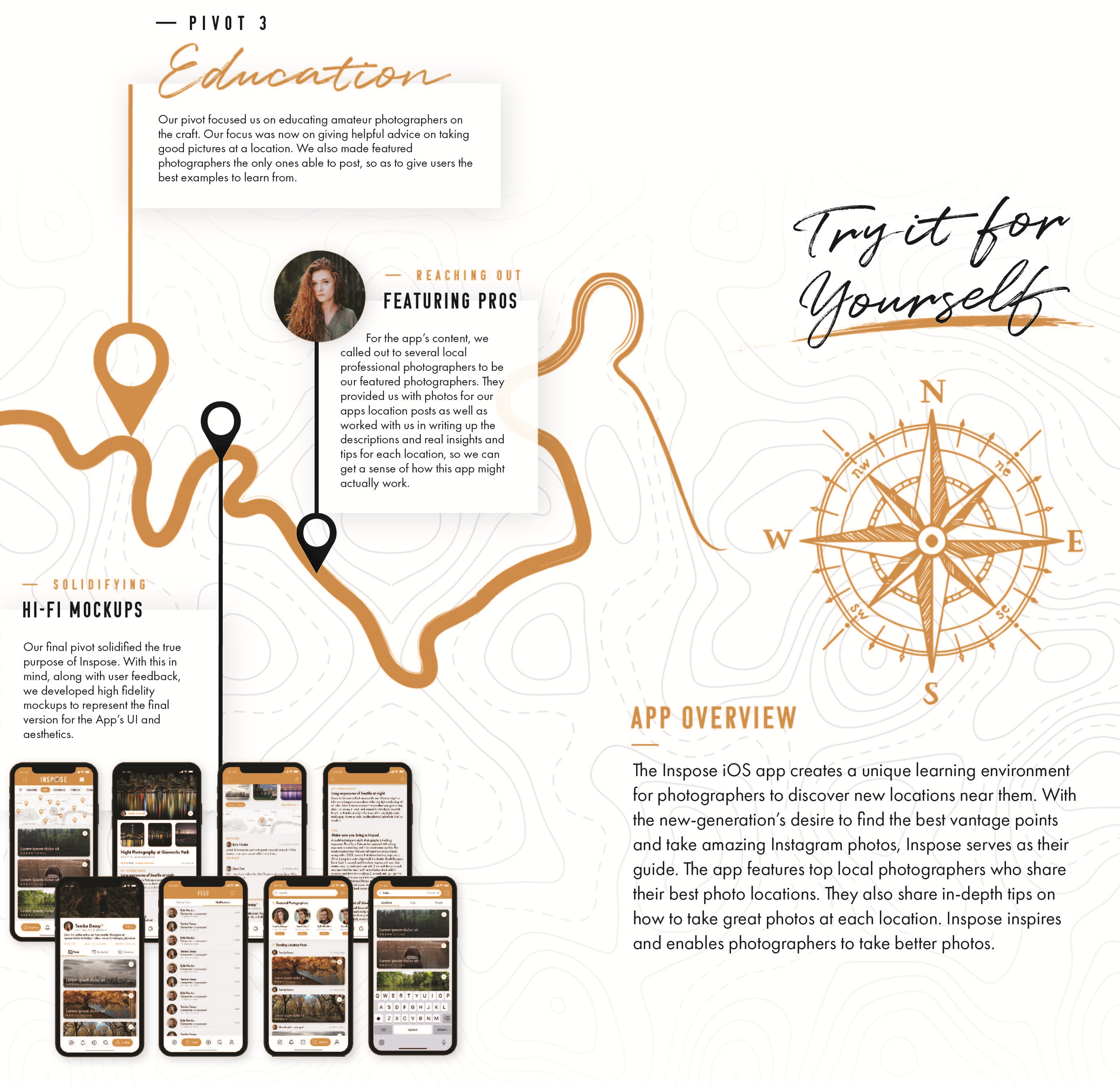
Our pivot toward education led to the final iteration of Inspose: an app designed to help amateur location photographers hone their craft by seeing the process of the professionals. Our main inspiration for this pivot was Dribble: a social media website exclusive to designers. You had to be invited to be allowed to post there but it was a great forum through which designers from various industries could share and discuss their ideas and work. As Instagram was open to showing photos of varying quality, we felt make it exclusively about professionals would not only make Inspose stand out, but mainly also allow the app to provide quality information for amateurs to learn from. Now professionals would be the only ones that could post and these posts would be structured to show the author’s reasoning and process in taking their pictures. The “Featured Professionals”, as we called them, could get feedback on their work from comments from other professionals and amateurs.
We also had the idea that as amateurs learn to take better photos, they could eventually join the ranks of the professionals. However, due to time, this joining process was never fully designed or implemented. Our main idea was applicants could be invited in; perhaps via one person or, most likely, a group of people who would vote them in. The final high fidelity mockups of Inspose’s pages were made and the dev team worked tirelessly to implement them.
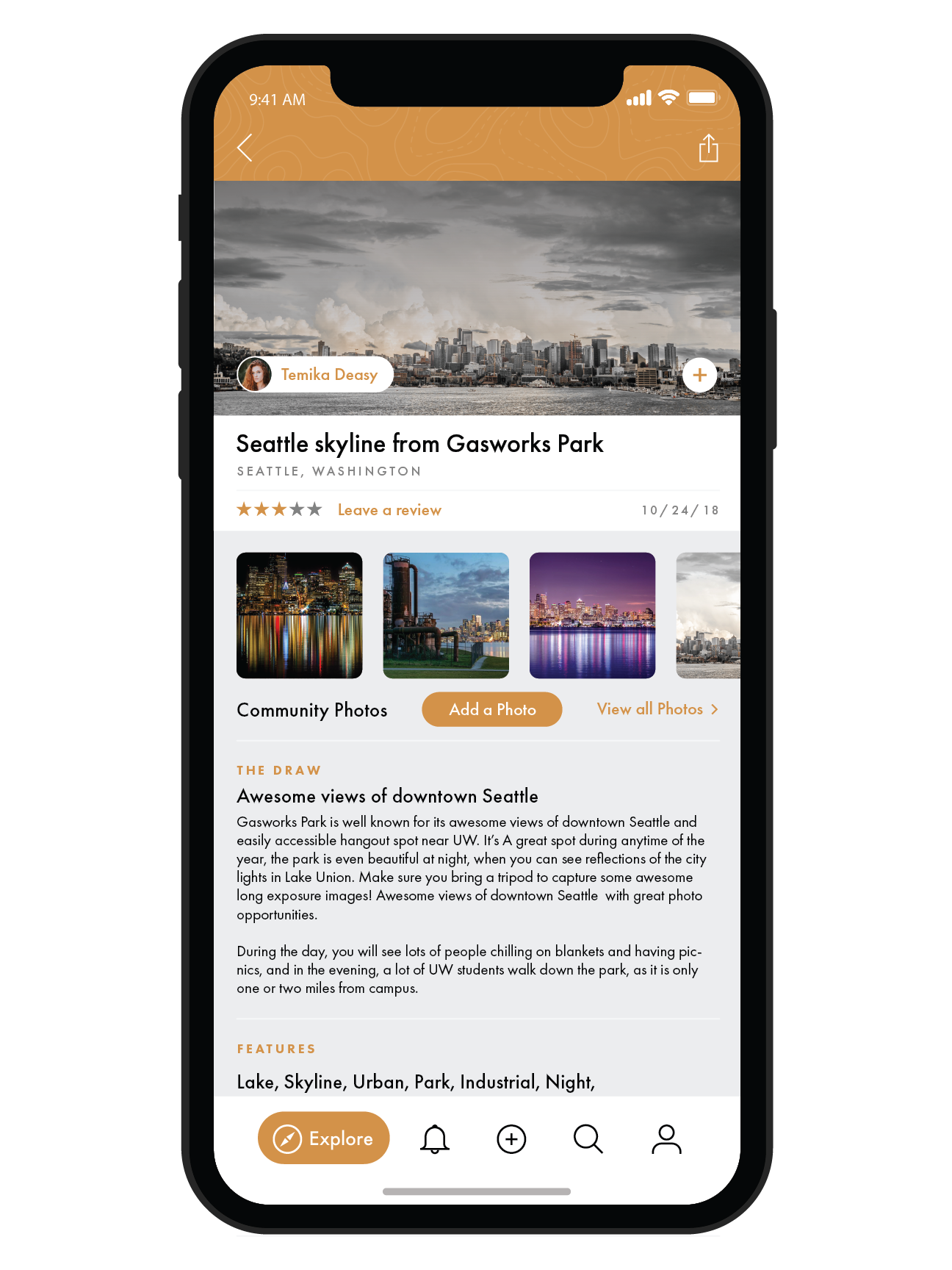
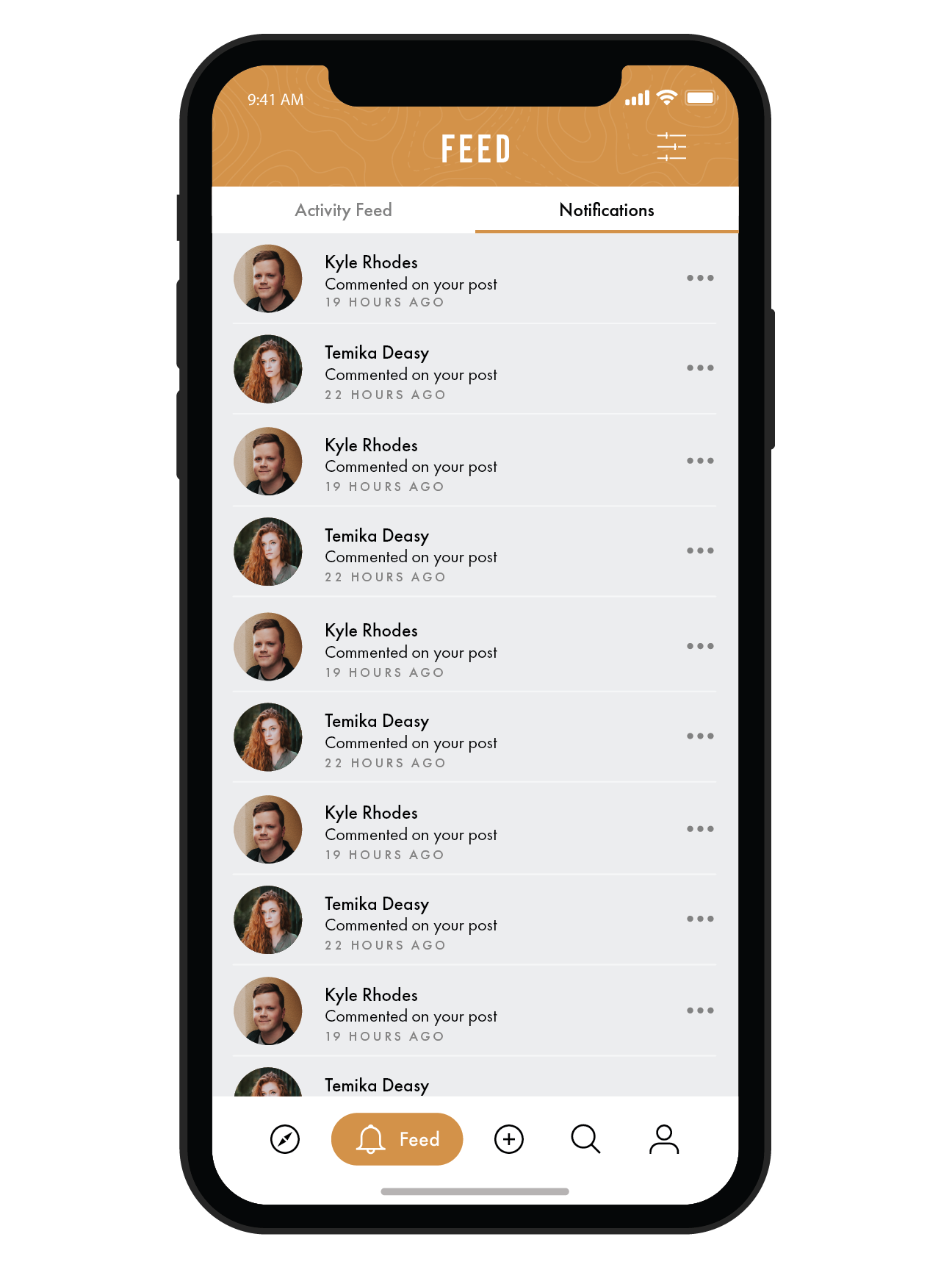
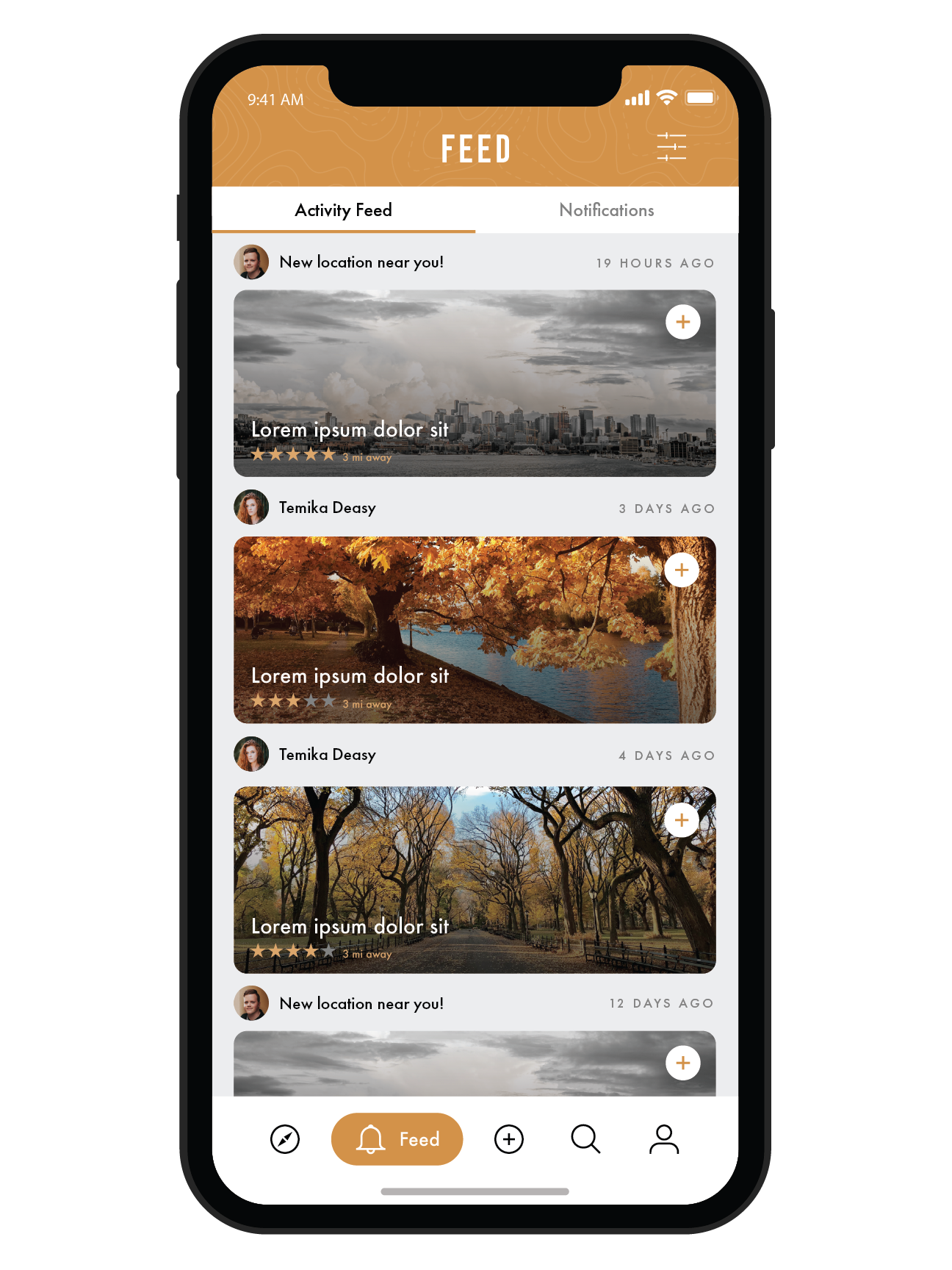
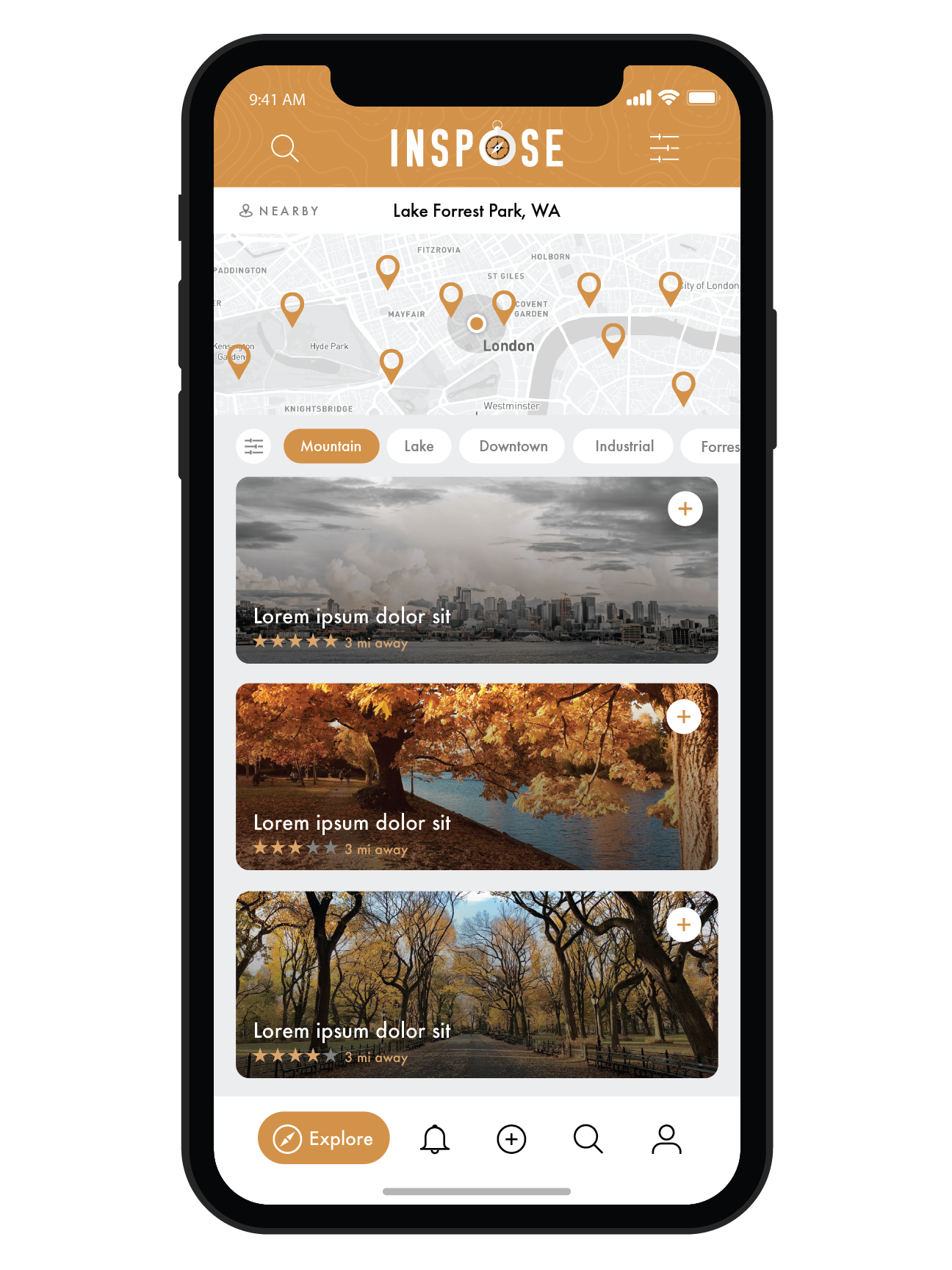
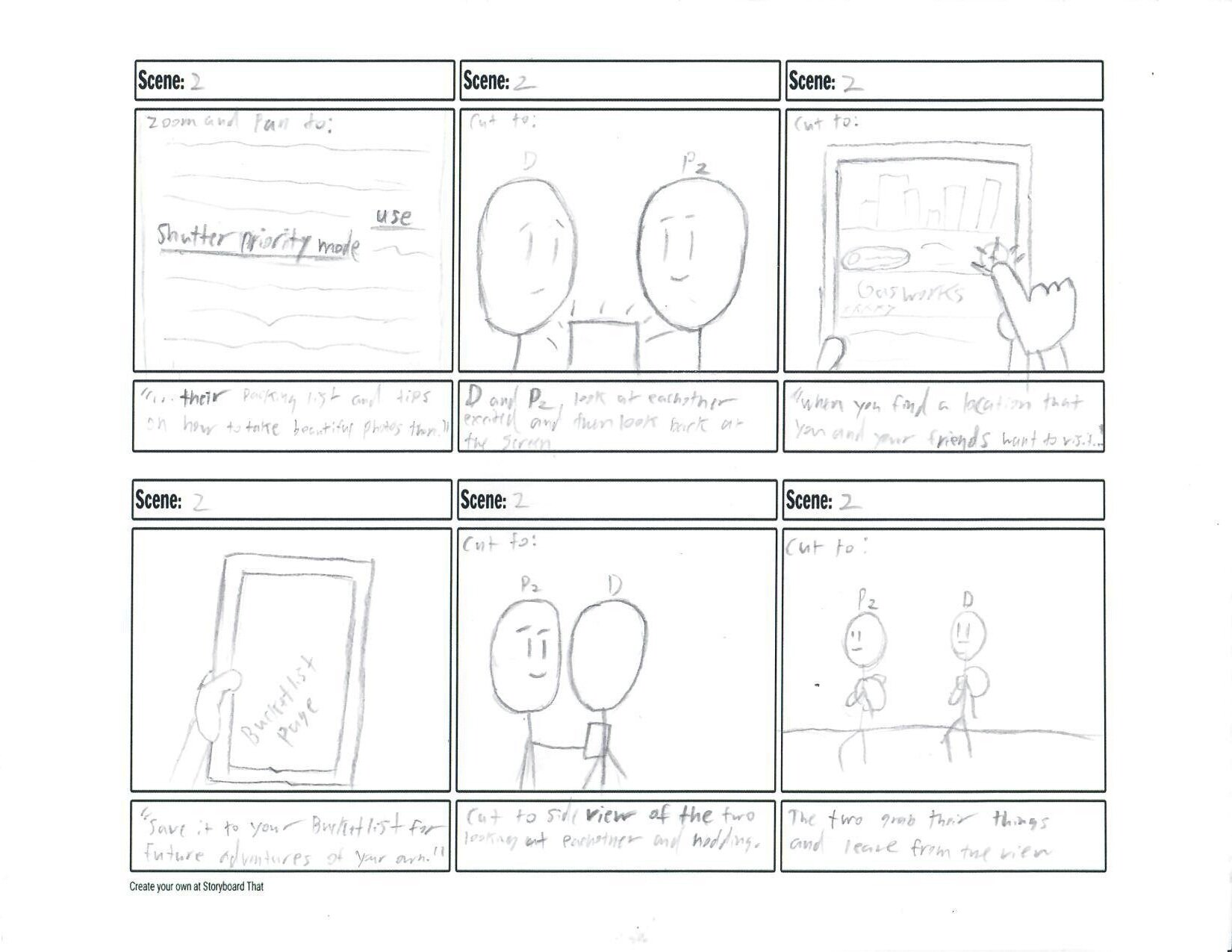
Meanwhile, with my work in designing mostly done, I was offered to write the script and do the storyboards for the trailer for our Capstone. It was unique and a fun experience to write and I would love to do it again sometime. I had never wrote a script before, but I had experience reading one; that being Harlan Ellison’s I, Robot: The Illustrated Screenplay. After finalizing the script, I turned the shots I wrote out into a storyboard so we could have a visual reference on shot angles and the like. I, being not the greatest artist simply drew people as stick figures.
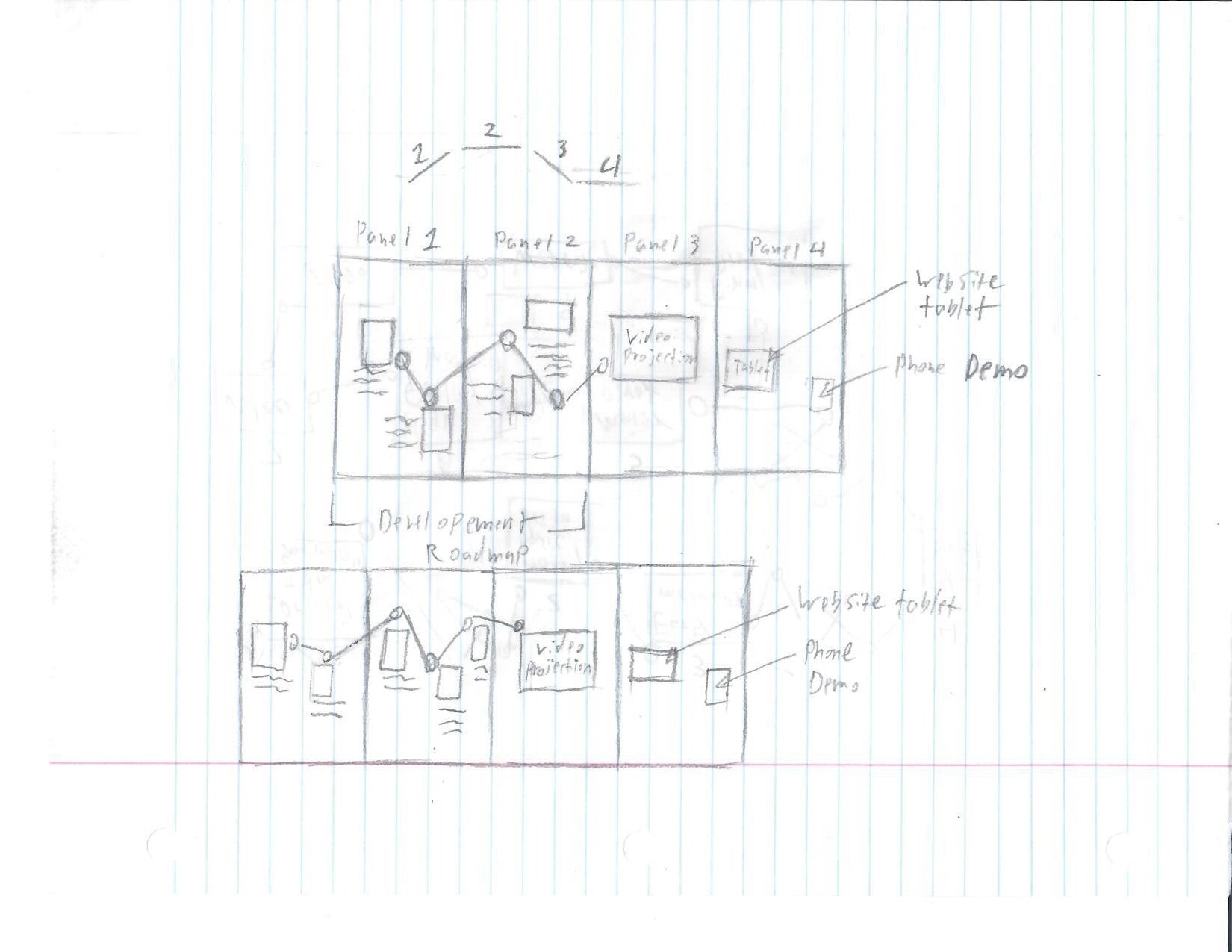
The final part of the project we worked on as a team was the large board that was to present our capstone and show our process in making Inspose. We were told to design it to show the pivots we did. Seeing that our app related heavily to locations and maps, we eventually came up with having the board display a trail going over a topographical map, each point along the way being a moment on the development timeline. With our idea in mind Kyle, the one who developed the high fidelity mock-ups, created the final version of the billboard you see today.
Conclusion
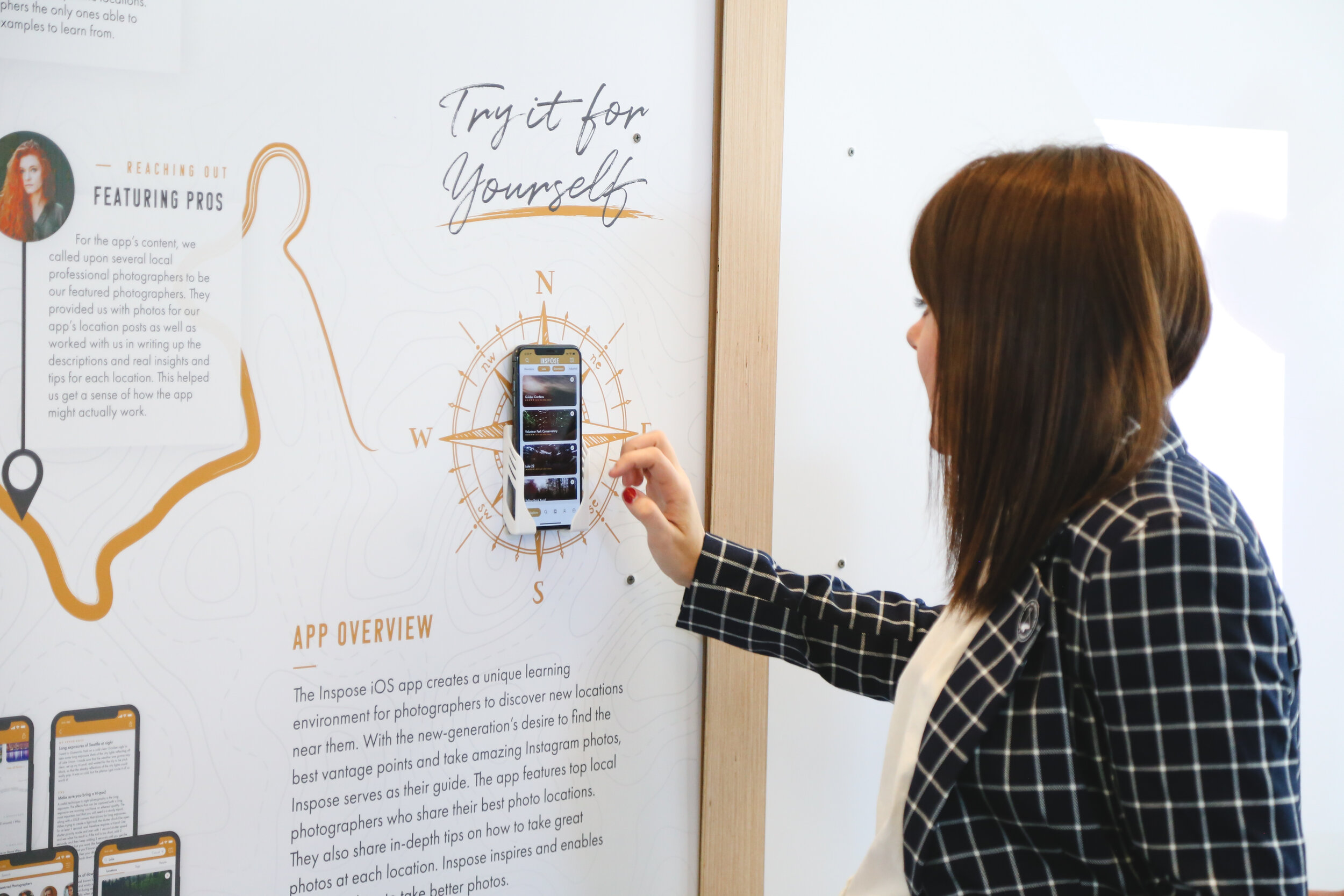
The reception for our capstone on the day we presented was quite positive. We got into a fairly good amount of conversations about our product and what we did, with many people saying how Inspose could become a popular app on the market if we took it further. Overall, I do feel Inspose was a success as a capstone.
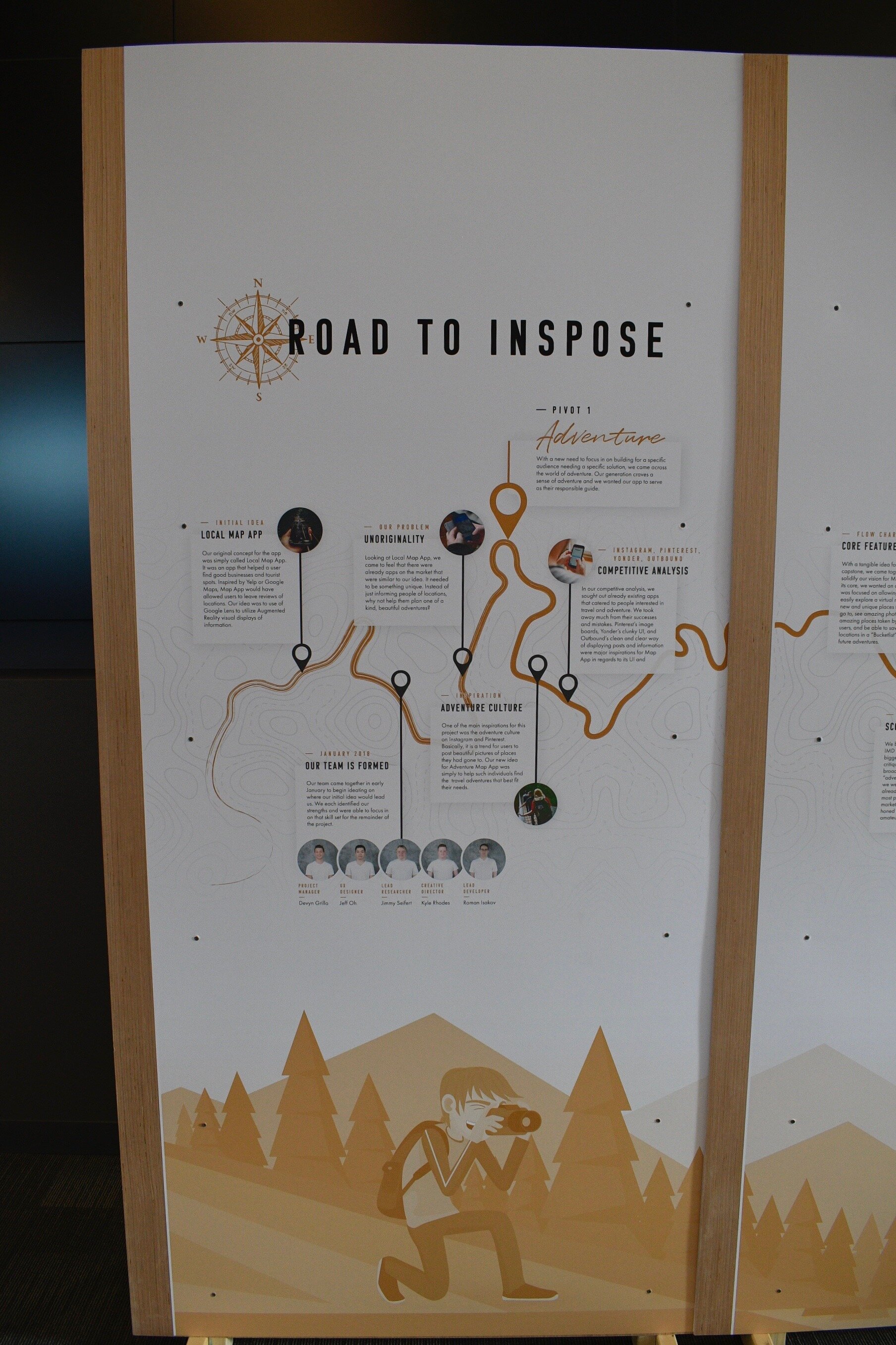
As I have said before in the beginning, designing Inspose put me out of my comfort zone in many places. Firstly, being traditionally a game designer, I had never helped create a mobile app from the ground up before and doing so, I feel, gave me more of a feel for what people might look for when using such systems. I also helped in making a trailer through scripting it and storyboarding it. And of course, I learned better communication skills. Were I to do this again, I would much more encouraging of user feedback; perhaps the group would do data gathering sessions once a week or bi-weekly. I also would fight harder for changes I felt would benefit Inspose. I feel there is still a lot of untapped potential for Inspose and perhaps, maybe, I could have helped unlock some of it.